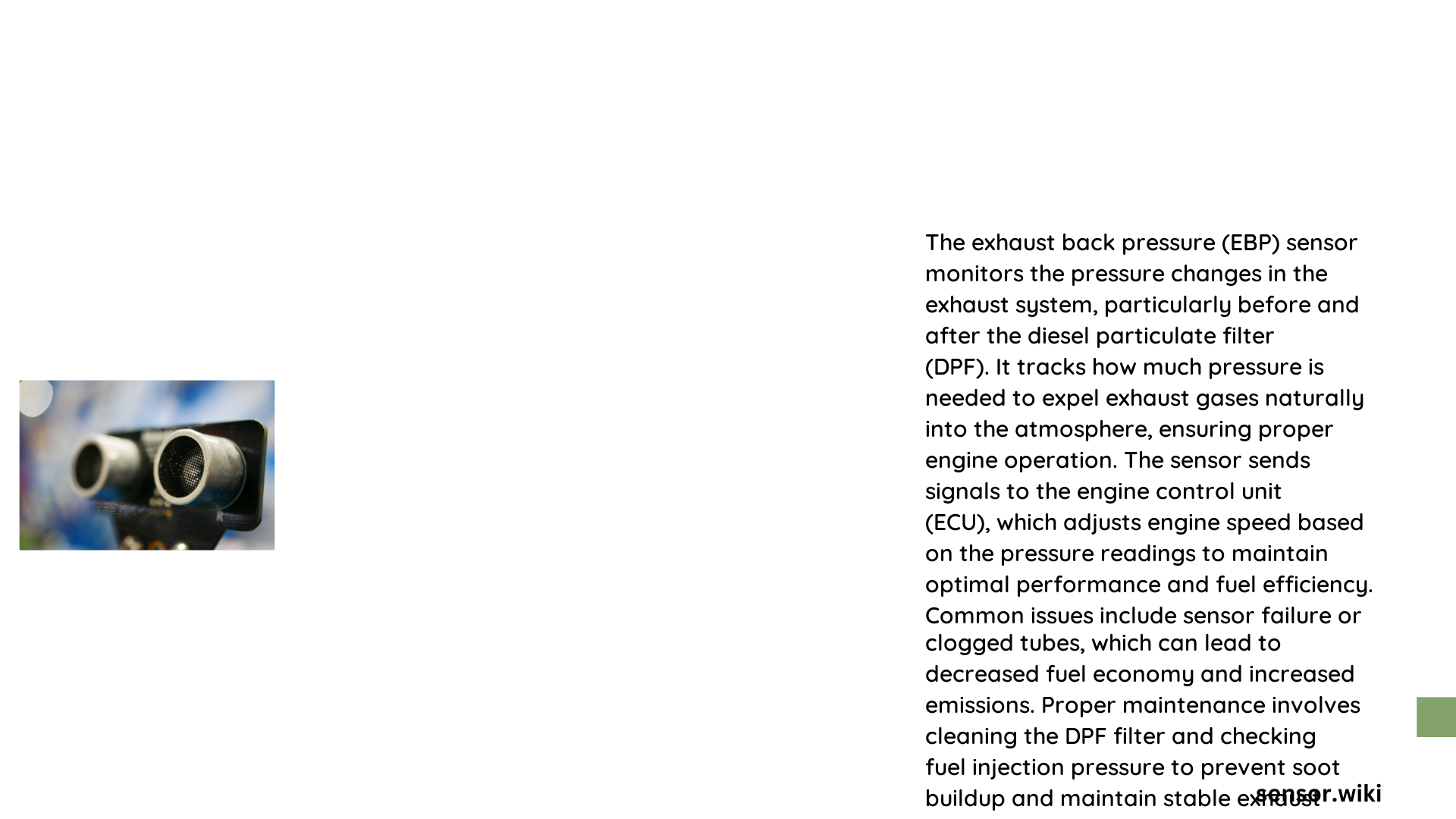An exhaust back pressure (EBP) sensor is a sophisticated automotive diagnostic component that monitors exhaust system pressure, providing critical data to engine control units for optimizing combustion efficiency, emissions control, and overall vehicle performance. These precision sensors detect minute pressure variations in exhaust systems, enabling real-time adjustments that enhance engine reliability and fuel economy across various operating conditions.
What is an Exhaust Back Pressure EBP Sensor?
An exhaust back pressure EBP sensor is a specialized electronic transducer designed to measure pressure levels within a vehicle’s exhaust system. By converting mechanical pressure into electrical signals, these sensors help automotive computer systems maintain optimal engine performance and emissions control.
Key Technical Characteristics
| Parameter | Specification |
|---|---|
| Pressure Range | 0-6 psi typical |
| Operating Temperature | -40°C to +105°C |
| Signal Output | 0.5V – 4.5V |
| Measurement Accuracy | ±1% full scale |
How Does an Exhaust Back Pressure EBP Sensor Work?

The EBP sensor operates through several critical mechanisms:
- Pressure Detection
- Measures exhaust system backpressure
- Converts mechanical pressure into electrical signals
-
Transmits data to engine control unit (ECU)
-
Signal Processing
- Generates voltage proportional to detected pressure
- Provides real-time exhaust system performance data
- Enables immediate computational adjustments
What Are Common Symptoms of EBP Sensor Failure?
Identifying potential EBP sensor issues requires understanding specific diagnostic indicators:
- Reduced engine power
- Increased fuel consumption
- Illuminated check engine light
- Irregular exhaust system performance
- Unexpected emissions control problems
How to Diagnose EBP Sensor Problems?
Diagnostic Procedure
- Visual Inspection
- Check sensor physical condition
- Examine wiring harness
-
Look for corrosion or damage
-
Electrical Testing
- Use multimeter to verify voltage output
- Compare readings with manufacturer specifications
-
Check signal consistency
-
Pressure Gauge Verification
- Connect professional pressure gauge
- Measure exhaust backpressure at idle
- Compare against manufacturer recommended values
What Are Replacement Considerations?
Cost and Labor Factors
- Average Sensor Cost: $50 – $150
- Typical Labor Time: 1-2 hours
- Complexity: Moderate technical expertise required
Replacement Steps
- Disconnect vehicle battery
- Locate existing EBP sensor
- Remove electrical connections
- Unscrew and extract old sensor
- Install new sensor with proper torque
- Reconnect electrical connections
- Perform system reset and diagnostic scan
Best Practices for Maintenance
- Regular diagnostic scanning
- Annual sensor performance checks
- Immediate investigation of warning indicators
- Professional installation recommended
Technical Specifications
- Voltage Range: 0.5V – 4.5V
- Pressure Measurement: 0-6 psi
- Temperature Tolerance: -40°C to +105°C
- Accuracy: ±1% full scale
Advanced Considerations
Modern exhaust back pressure EBP sensors integrate advanced microprocessor technologies, enabling more precise measurements and faster computational responses. Emerging sensor designs incorporate enhanced materials and miniaturized electronic components for improved durability and performance.
Conclusion
Understanding exhaust back pressure EBP sensors requires comprehensive technical knowledge. These critical components play a fundamental role in maintaining vehicle performance, emissions control, and overall engine efficiency.
